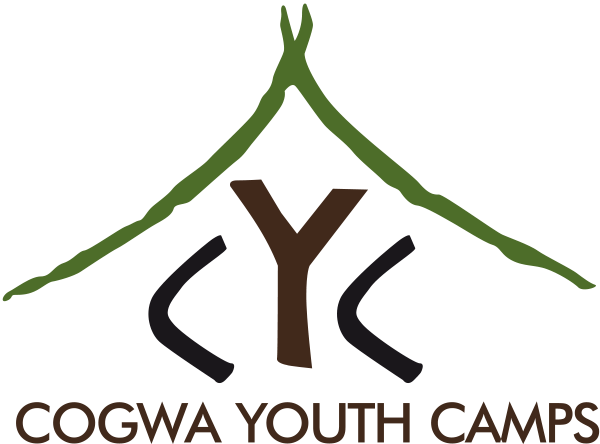Member News
September 2022 Member Letter
September 8, 2022
Dear Brethren,
The countdown has begun! The Feast of Trumpets is less than three weeks away, with Atonement, the Feast of Tabernacles and the Eighth Day of the Feast (the Last Great Day) following shortly thereafter. In so many ways this is the most exciting time of the year. In my family, we have purchased our airline tickets, made hotel reservations, arranged for rental cars and finalized our church visits for the next five weeks. Sharron and I are planning to be in San Luis Potosí, Mexico, for the Feast of Trumpets; St. Petersburg, Florida, for Atonement; Fort Myers, Florida, for the first half of the Feast; and St. Philip, Barbados, for the second half.
In reflecting on how complicated our plans are for this year, my mind went back to a simpler time when, as a young boy, I traveled to the Feast with my family. There was only one Feast site and that was in East Texas. We referred to it as Gladewater in those early days, not having heard of Big Sandy, as it later came to be called. For those who never attended the Feast in East Texas, you may not be aware that the Radio Church of God owned a large tract of land off U.S. Highway 80, between the Texas towns of Big Sandy and Gladewater. The original tract of 25 to 30 acres was donated by Buck Hammer in 1952. Mr. Hammer and several members of his family were instrumental in building the Feast site in Texas for the Radio Church of God. The property was closer to Big Sandy, but Gladewater was the larger of the two cities.
In those years, we submitted our request for a campsite and were assigned a spot along with others from our local church area. Each year, as a congregation, we were assigned to a different street in the “piney woods,” which is what we called the camping area on the Church’s property. I remember being on Ninth Street, then 32nd Street, and once we were actually assigned to Fourth Street. The lower your street number, the closer you were to the tabernacle where services were held. We brought all our food, but generally, as a special treat, we ate one meal in a restaurant each year. We never stopped, either coming or going, but drove straight through from our home in northeast Arkansas. Staying in a hotel or motel was simply out of reach for our family.
Some of the saddest days of my life during those years were on the Eighth Day when, at the conclusion of the final service, we sang the lyrics “God be with you till we meet again.” There wasn’t a dry eye in the audience. My family always felt the need to get back home to work and school as soon as possible, so once the sun set after the Last Great Day, we took our tent down, loaded everything into the U-Haul and began our trip home. It was an eight-hour drive in those years, with many two-lane roads. We generally arrived home in the early morning hours of the next day, but we were still expected to be at school or back to work that same day. I always remember that first day back at school being one of the longest! And saddest! The Feast was over for another year.
One year upon returning home from the Feast, one of my teachers asked me to explain to him why we kept the Feast. Even though I was very young, I still felt comfortable explaining the spiritual meaning of the festivals to my teacher. The first time I heard Mr. Herbert Armstrong explain the plan of salvation through the holy days, it stuck with me. It made such perfect sense. The fact that God had a plan was incredibly clear, but the fact that this plan corresponded to the harvest seasons in ancient Israel and was laid out chronologically according to the occurrence of the annual festivals was indelibly impressed on my mind.
Each year the first three festivals correspond to the spring harvest in ancient Israel—Passover, Days of Unleavened Bread and Pentecost. The grain harvest in the spring is symbolic of the spiritual harvest of the firstfruits, those called during this lifetime. From the acceptance of Christ as our Savior (Passover), to the removal of sin from our lives and replacing that sin with righteousness (Days of Unleavened Bread), to the sealing of the firstfruits with the Holy Spirit (Pentecost), we see God’s plan unfold. Pentecost is not the end or the completion of the spiritual harvest of the firstfruits, since the reward of eternal life is not received until Christ returns. Pentecost pictures our being sealed with the Holy Spirit of promise (Ephesians 4:30). Once we are sealed, we must patiently endure until the end of our lives or the return of Jesus Christ, which is symbolized by the Feast of Trumpets.
Christ’s return sets in motion a series of events that will lead to an offer of salvation to all mankind—those who were not included in the firstfruits. The final four festivals correspond to the fall harvest in ancient Israel. It begins with the Feast of Trumpets, picturing the return of Christ, which is followed by the Day of Atonement. This holy day symbolizes becoming at one with God, an event that cannot take place until Satan is bound. This binding of Satan for 1,000 years (Revelation 20:1-3) takes place sometime after Christ’s return and before the Millennium begins.
For the seven days of the Feast of Tabernacles, we celebrate the new world government under Christ. And on the Eighth Day, the Last Great Day, we are introduced to the final judgment for all those who lived and died in the approximately 6,000 years of human history and who were not part of the firstfruits. Scripture tells us that there will be some who will be resurrected and destroyed in the lake of fire. This is the third resurrection, described in Revelation 20:14-15. We anticipate that the vast majority of mankind will accept God’s generous offer of eternal life, which will require them to live another life, being taught the truth instead of the deception that has dominated our world. After the final judgment, this world will be destroyed (2 Peter 3:10) and then replaced by the new heavens and the new earth (Revelation 21:1-2). God’s plan, pictured in His festivals, will then be complete.
Today, we must live in a world that is very sad and full of darkness—wars, pandemics, violence, increased crime, families being destroyed, and children being abused. But for a few days each year we celebrate a different world, one that we believe is coming soon. The two commands that are associated with the Feast of Tabernacles are (1) to rejoice and (2) to learn to fear God (Deuteronomy 14:23-26). We must not allow ourselves to get so busy with all the physical arrangements that we forget why we keep the Feast each year! It is simple, but profound. It is God’s plan of salvation, celebrated each year through our observance of the annual festivals.
Sincerely, your brother in Christ,

Jim Franks








